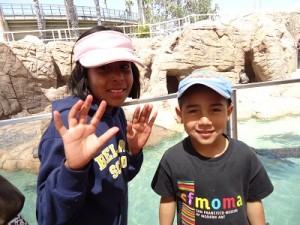The merry month of May is upon us, which means it’s time for my annual plug for skin cancer awareness. I happen to be one of those very pale people whose skin blisters and sizzles with minimal sun exposure. I don’t step outside the house without sunglasses and a hat. Long sleeves? In a hundred degree weather, I wear ’em. Behind the wheel of a car, as soon as I buckle my seatbelt, I pull on driving gloves. Not because I fancy myself a superb driver, but because on the rare occasions when I don’t, half-a-dozen new freckles appear on the backs of my hands.
May is Skin Cancer Awareness Month, a joint venture of the American Academy of Dermatology and the American Cancer Society. New research suggests that up to 3 million Americans will be diagnosed with skin cancer this year.
The most serious form, malignant melanoma, will kill about 8,420 people. Fortunately, malignant melanoma, like most skin cancers, can be cured if detected early.
Fifty percent of fair-skinned Caucasians will develop skin cancer in their lifetime. Asians, Hispanics, Latinos, and African-Americans can also develop skin cancer. Sun damage begins in childhood and is cumulative. As parents, we can be proactive for our children by following the American Academy of Dermatology guidelines:
- Seek shade
- Wear protective clothing
- Use sunscreen

The sun’s most damaging rays are present in the middle of the day, when our children are at school. Parents can work with schools by asking that health education programs include information on skin cancer awareness and protection. Parents can also make sure that shade structures are in place for lunch and outdoor activities.
My family wears sunscreen 365 days a year. We also wear hats. For stylish designs that offer excellent protection, check out Wallaroo Hat Company; Solumbra; and Coolibar.
Finally, with increased sun exposure, dry white spots commonly found on the face, known as pityriasis alba, become more pronounced, especially on darker skin. Sunscreen helps keep skin tone even, and minimizes the contrast.
The skin is the body’s largest organ. Please protect it.
Tags: adoptive families, American Academy of Dermatology, American Cancer Society, Coolibar, international adoption, pityriasis alba, Skin Cancer Awareness Month, Solumbra, transracial adoptive families, Wallaroo Hat Company




 ShareThis
ShareThis
So true! Thank you for the reminder! I am right there with you, in the pale-skinned, easily freckled territory. What I am bad about is remembering to be as vigilant about Alex with his darker shade of skin – I somehow tend to be lazy, thinking that he’ll be fine…I really should know better. Again, thank you.
I’m also sometimes guilty of being lax, relying on the natural protection of my kids’ darker compexions. Then the white splotches appear, and I’m reminded (arrrrrgh!). Important for all of us to seek shade, wear hats, and remember the sunscreen. Especially if Alex is out sailing on the bay!!That beautiful face!
PS: I’m sure you know this, but what works best for us to incorporate into the kids’ routine. Brush teeth, apply sunscreen. We also keep tubes of it by the back door, in the backpack, and in the car…
Hi Jessica!
I am so glad you’ll be at Latin American Heritage Camp this summer, discussing your book during our annual “book group!” I came to your blog site to find a picture of the book cover to use in an email announcement.
Anyway, thank you for the shout out about skin cancer. As a melanoma survivor myself, I truly know how important it is to “cover up,” no matter your skin color, and I wasn’t as diligent when my own Asian skinned kids were younger either! If I only knew then what I know now….See you in June!
Hi Pam:
We’re all looking forward to this year’s Latin American Heritage Camp; our fourth time attending. We wouldn’t miss it! And I’m really excited about discussing “Mamalita” with the book group. What a bonus~
Glad to hear you had a good outcome with melanoma. Yes, so important for every skin type to “cover up,” especially at high altitudes.
See you soon!
[…] Is it good for Asians and whites that cross Canada? Summers are brutal and the winters are no sun? … (continued) here in Canada. Neither group fits a drastic climate and strange. The whites may have skin cancer in the summer, but can make vitamin D and the winter, and Asians are tan to protect the strong sun in summer but can not produce enough vitamin D in winter. However, a cross between white and Asian could produce offspring that can both sun in the summer sun and develop rapidly in the sunless winter pale skin. You think it's a good idea for white and Asians to interbreed to survive well in Canada? Have you ever heard of sunscreen? Or milk? Why do you say "cross"? We are talking about different races as if they were animals. BREAKING NEWS: Michael Jackson Has Skin Cancer Part 1 […]